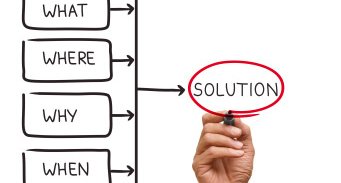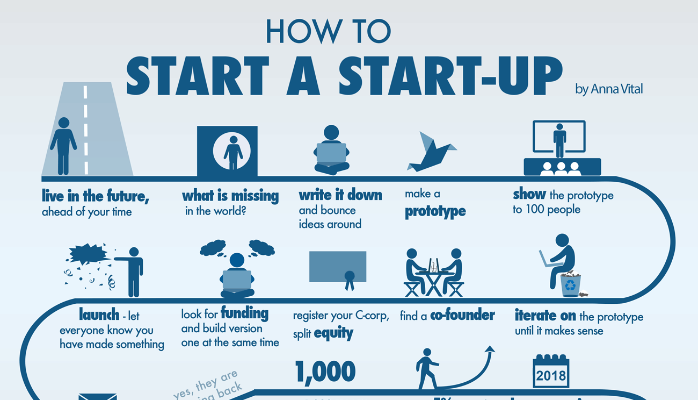5 Tips for Building Your IT Infrastructure From Scratch
Successful businesses rely on a multitude of hardware, software, and service solutions to power their operations. But without prior IT experience, putting these products in place can be a daunting task. : moPharma

Tips for Building Your IT Infrastructure From Scratch
Even just figuring out what tools you need can be difficult. From communications, file sharing and collaboration services to network security and stability, help desk support, and hardware management programs, the options are abundant and the guidance scarce. A small, resource-strapped company might only pick up these products one by one as needs arise and as employees juggle multiple roles, making a cohesive system hard to come by.
So how do you find and implement the right IT systems for your company? We talked again with oDesk’s own IT Manager, Gordon Thomas, on how to approach building up an IT infrastructure with a long-term, sustainable strategy in mind.
ajit bAnalyst suggests...
- Search Early for the Right Solutions
- Don’t Overlook Relationships with the Vendor’s Team
- Aim for Simplicity
- Find Solutions That Will Grow With Your Company
- Keep Processes Flexible and Intuitive
Decisions made early on when choosing between different IT products and services can have major repercussions down the road as your company matures. As a startup or small business, finding the right software development product that will fit both your current and future business needs is often a tricky, time-consuming process. So where do you start your search?
Thomas advises to “look within the office and see if anyone has already cobbled something together — because a lot of times people have already found your solution.” You can ask, “is anyone already using this solution and can we just adopt it on a broader scale?” Close to half of the products Thomas has implemented were originally found internally.
If no immediate fix exists within the office, research third-party reviews and contact mobile app development company to test out their mobile app or services in your workplace.
“What level of commitment is required for the product?” Thomas typically asks himself. “We want a path where we can test and get comfortable with a product in real-world conditions.” He recommends watching to see if any problems that arise can be solved before adopting company-wide; if not, don’t hesitate to switch products at the trial stage.
When searching for enterprise software development and services, look to the early stages of your relationship with each vendor as an indicator of the support you will receive later on if something goes wrong.
“How do they respond when you have a problem? Do they help you? Do they charge you to help you? Do you get placed in the queue and have to work your way up through four layers of tech support?” Thomas said.
He also recommends building peer relationships with a vendor’s engineering and support staff while evaluating their product. Having a direct line for advanced troubleshooting or questions will save valuable time and provide greater insight into the workings of the product.
While most enterprise services feature in-depth customization for every client’s needs, Thomas recommends that smaller companies lean toward purchasing standardized products instead.
An oDesk team meets in our Pangea conference room — complete with a projector, TV, Mac mini and more
“The less configuration involved, the better,” he explains. “This generally signifies a better developed or more mature product. When it comes time to support the product, you’ll be able to do it with a lot less overhead.”
Choosing standardized products also simplifies training, onboarding, troubleshooting, and implementing vendor updates. “The perfect product that you have to customize and script is generally not going to be worth it.”
As app development companies in India grow and expand beyond the confines of a single office, their individual IT needs change rapidly. A small business might use a basic file-sharing service that works well for 20 people, but unravels into a mess after two years and 200 additional employees.
Finding products that can grow well with your business will help you avoid future switching costs like company-wide retraining and increased staff turnover. Thomas highlights administrative scalability as a commonly overlooked feature that can make or break a product experience.
“You want to make sure that your system has great logging, a great administration interface, different admin tiers, and the ability to add and remove admins,” Thomas said. “That’s the biggest impediment to scaling and sticking with a system over a period of time.”
“Finding app development companies that have good scalable administration is the exception rather than the rule,” he added. “That’s the difference between IT being able to solve a problem in 30 seconds versus three days.”
Other factors to evaluate for growth potential include geographical distribution, the ability to add functionality, and whether the product allows for scaling down as needed.
If you were to disappear today, would the company be able to function? Thomas warns against accumulating a burden of implicit knowledge over time, which is an inclination commonly seen among managers in rapidly changing environments.
“There is a tendency in IT to over-engineer things — it’s so easy sometimes to just throw a script on something to patch a problem. You build up a web of these cheap, temporary fixes, and eventually the burden of maintaining and remembering all of them becomes so high and these systems become so complex that you can never take a break or hire new people.”
Whenever possible, opt for permanent fixes that won’t require revisiting down the road. Keep the complexity of the system to a minimum and leave a breadcrumb trail for coworkers and new employees to follow; this will help your business stay agile amid a landscape of accelerating technological change.
What have you learned while setting up your IT infrastructure? Share your thoughts and experiences in the comment section below!
If you are looking to build your next (or first) mobile app and need help with one or more of these steps, you’re in luck! The moPharma Group welcomes app owners at any stage in this process. Whether you are a startup or Fortune 50 company, we have the team and knowledge needed to deliver a fantastic mobile app. Please don’t hesitate to write us today.





Discuss about post